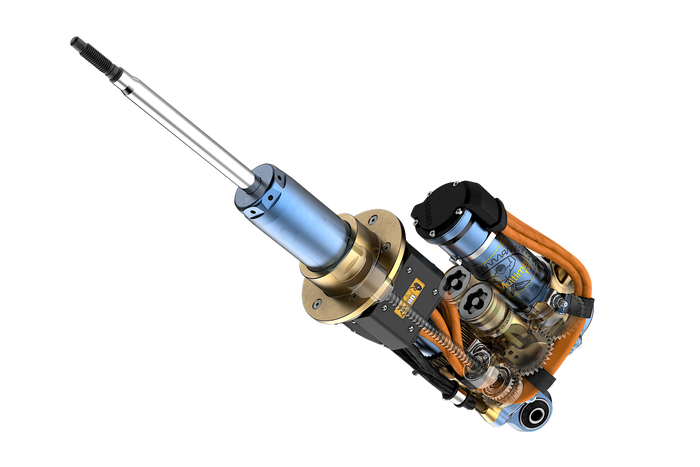Ferrari SUV Debuts New Multimatic Active Damper Technology
Multimatic’s True Active Spool Valve Damper marks an advance in the company’s spool valve technology.

While the world debates the appropriateness of famed race team and sports car purveyor Ferrari’s introduction of a crossover SUV model with the Purosangue (“pure blood”), engineers can marvel at the car’s introduction of a sophisticated new active shock absorber technology from Multimatic.
The Multimatic True Active Spool Valve (TASV) damper improves over the company’s existing Dynamic Suspensions Spool Valve (DSSV) technology by adding speedy active control to the spool valve’s ability to provide very precise valving of the hydraulic damper. We've seen DSSV shocks on the Chevrolet Colorado ZR2 and Camaro ZL1 1LE as well as the limited-edition Aston Martin One-77 sports car.
TASV Damper contains two spool valves independently controlling compression and rebound motion. Adding an electric motor gives the damper more force authority and does so at higher frequencies than traditional adaptive or semi-active shock absorber designs.
Doing so requires significant energy, so the Purosangue includes a 48-volt electric system that powers the TASV dampers. We’ve seen 48-volt active anti-roll bars in other vehicles such as Audi’s Active Roll Stabilization system.
The electric motor used to control the dampers is a high-power density, liquid-cooled, three-phase brushless electric motor that was co-developed for this application by Ferrari. The motor features a “slotless” stator winding technology to minimize its radial dimensions for easier packaging with the suspension and to maximize power density.
The motor force is transmitted to the valve via a twin-lead ball screw that is connected directly to the hydraulic damper piston rod. This enables high-frequency response and reduces friction, inertia, and package space.
The Purosangue’s accelerometers and position sensors on each suspension corner include the Side Slip Control (SSC) 8.0 and the 6w-CDS sensor that feed data to Ferrari’s proprietary control logic that manages control of the fully active suspension system.
A challenge of a Ferrari SUV is meeting customers’ expectations for sporty performance and handling in a vehicle that is taller and that has a higher center of gravity. The Multimatic TASV dampers mitigate the height by permitting variable and continual distribution of roll stiffness and active lowering of the roll center (by up to 10mm).
This lets the computer tailor the Purosang’s handling characteristics to the circumstances, and the dampers’ high-frequency control lets them manage both body motion and wheel movement, so they can both reduce roll and pitch as well as absorbing road surface irregularities. The ability to control body motions and height eliminates the need for any anti-roll devices or mechanisms for dynamic ride height adjustment.

“This technology makes it possible to continuously control the vehicle body to achieve targeted vertical, roll and pitch dynamics at any speed.” said Michael Guttilla, Multimatic Vice President of Engineering. “For example, the system can actively lower the vehicle’s center of gravity and control pitch and roll stiffness under acceleration, braking and cornering to maximize traction and dynamically optimize under/oversteer handling balance. It can also optimize tire contact with the road as the vehicle drives over rough surfaces, delivering exceptional ride quality and stability.”
These sound like ideal characteristics for making an SUV deliver the driving experience expected of a Ferrari. We can’t wait to find out for ourselves with a Purosangue test drive!
About the Author(s)
You May Also Like


.jpg?width=300&auto=webp&quality=80&disable=upscale)


